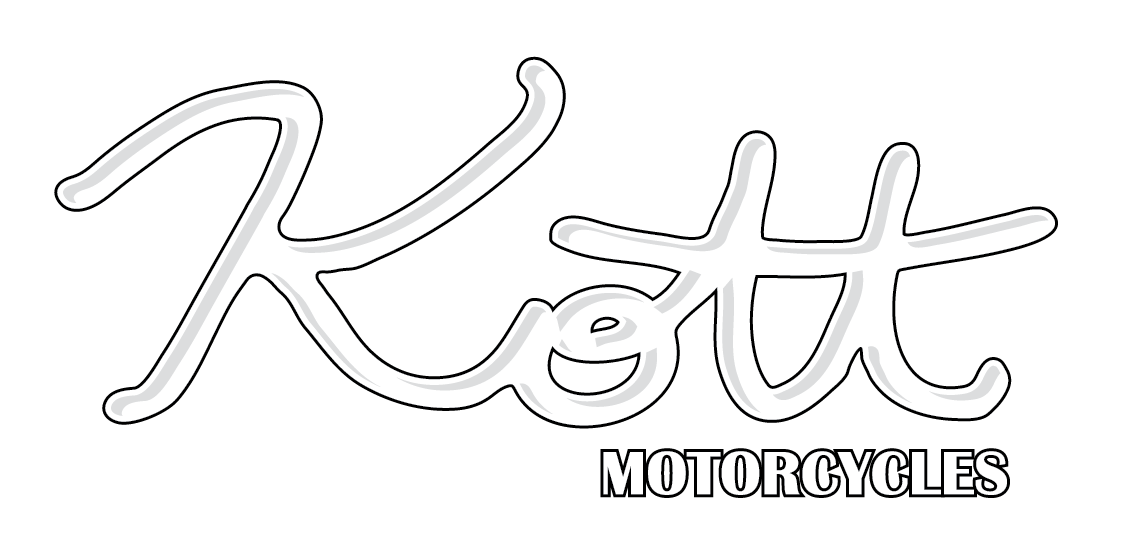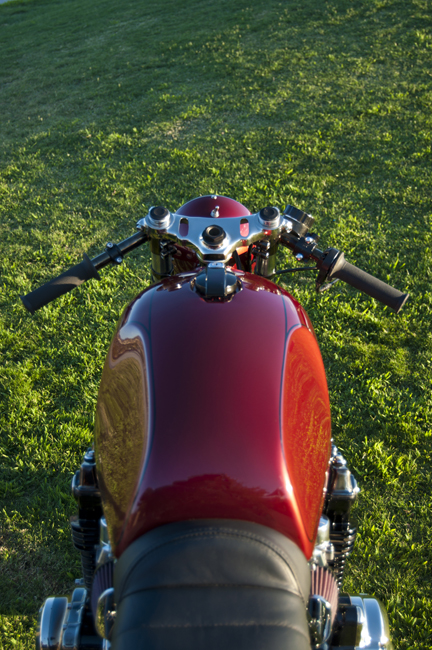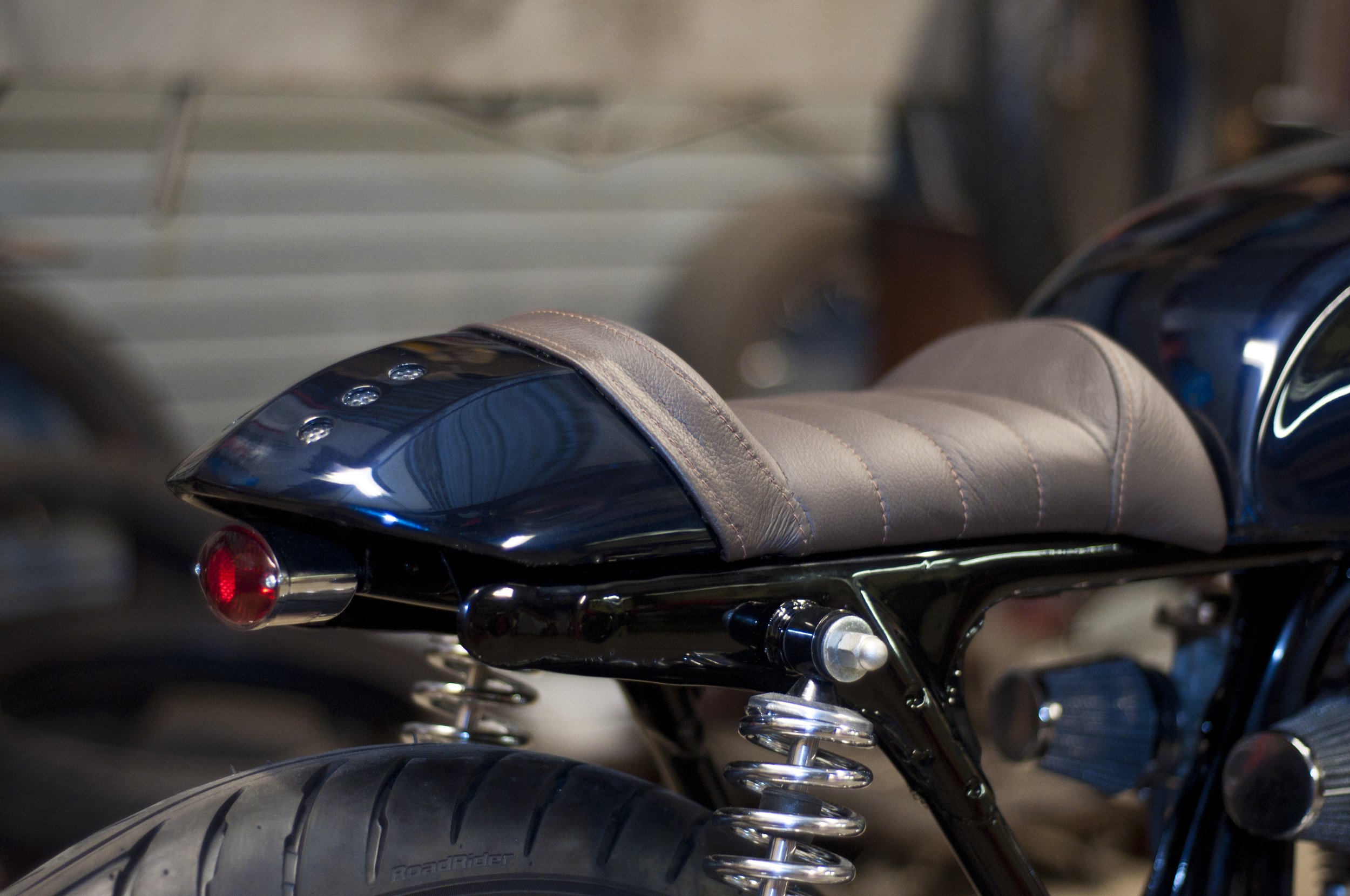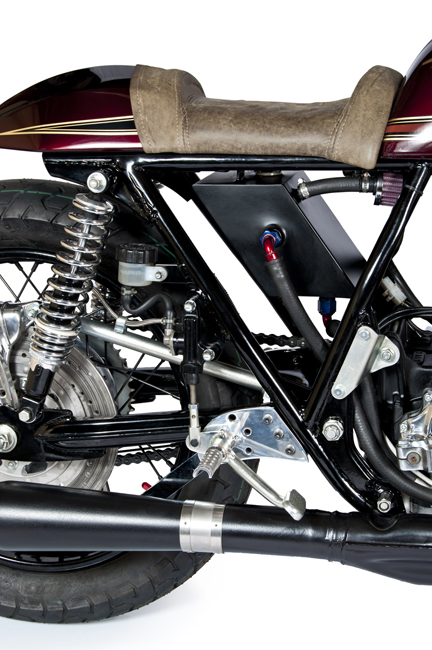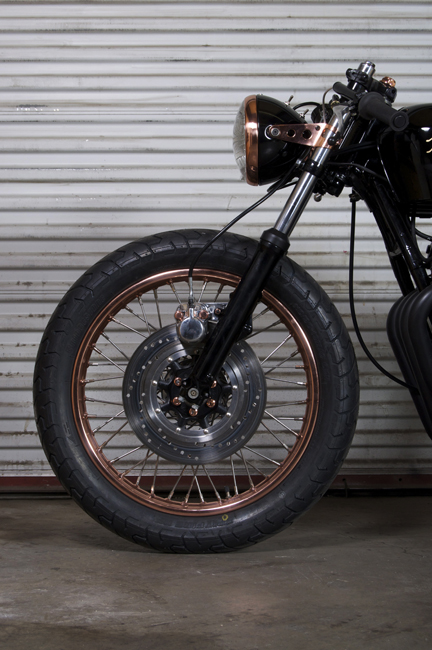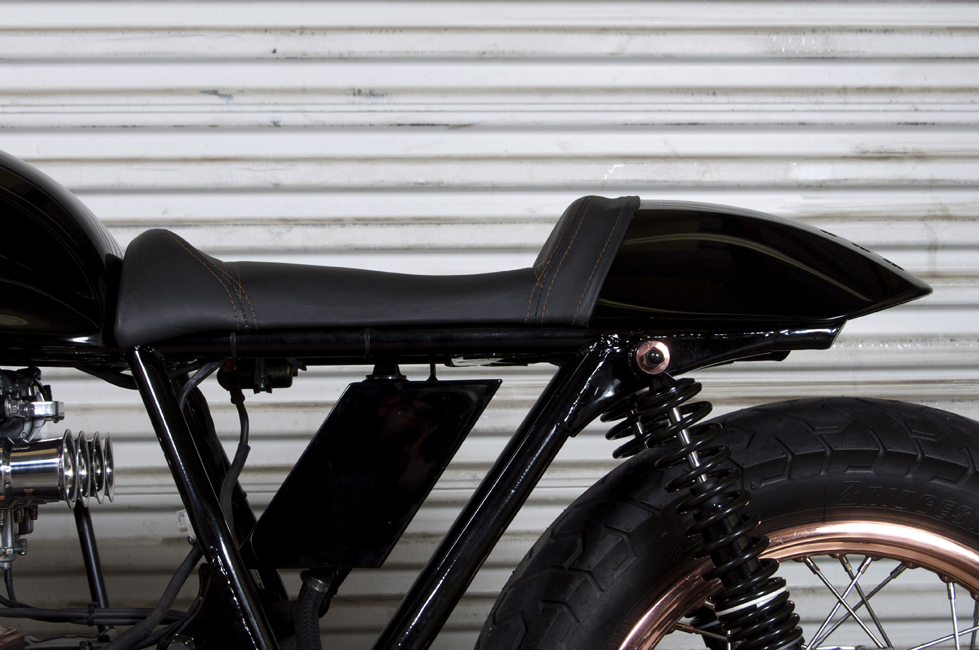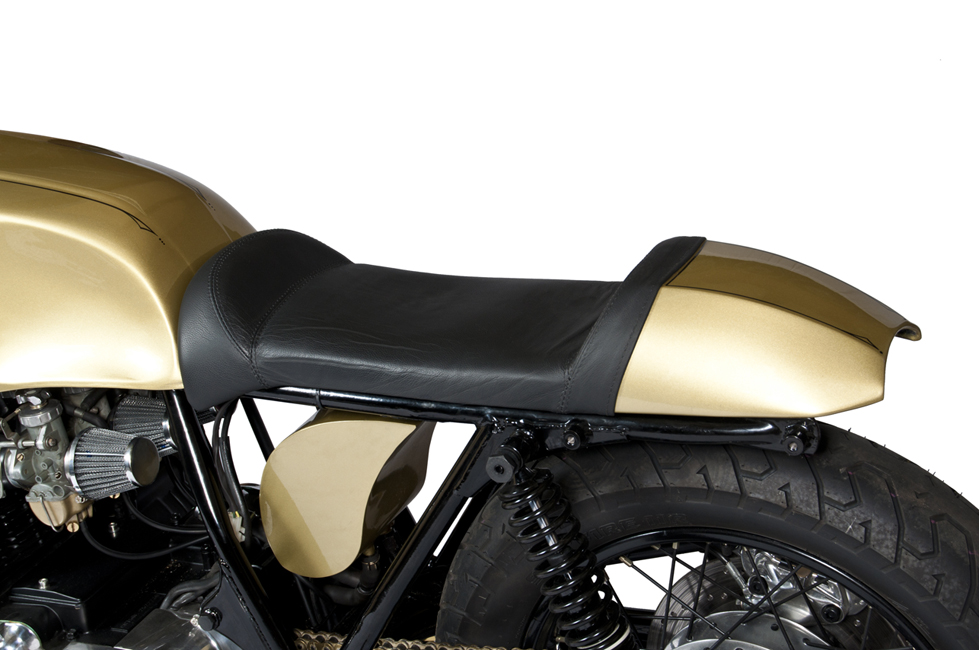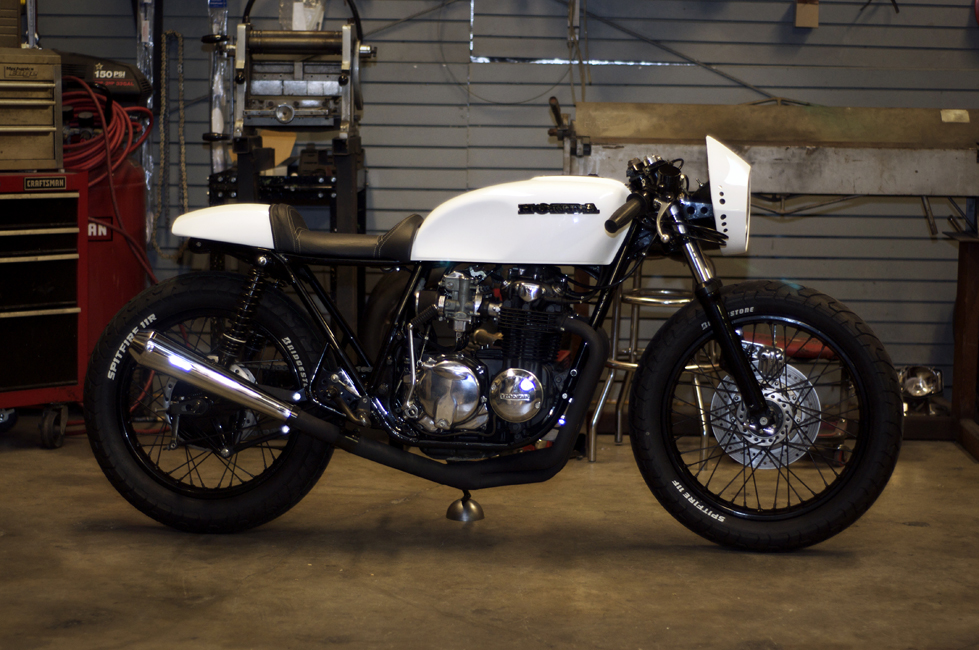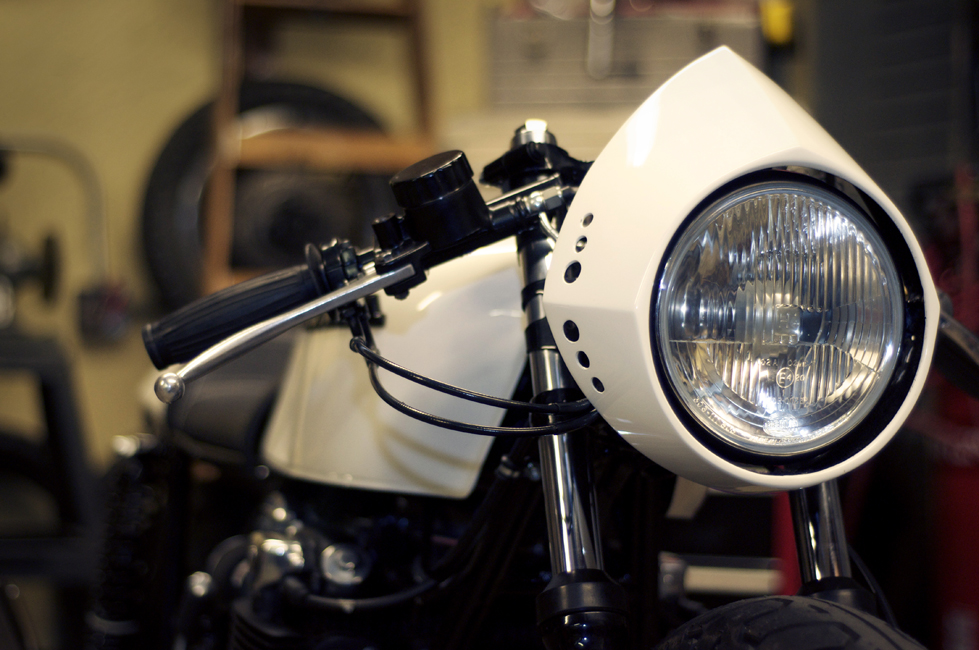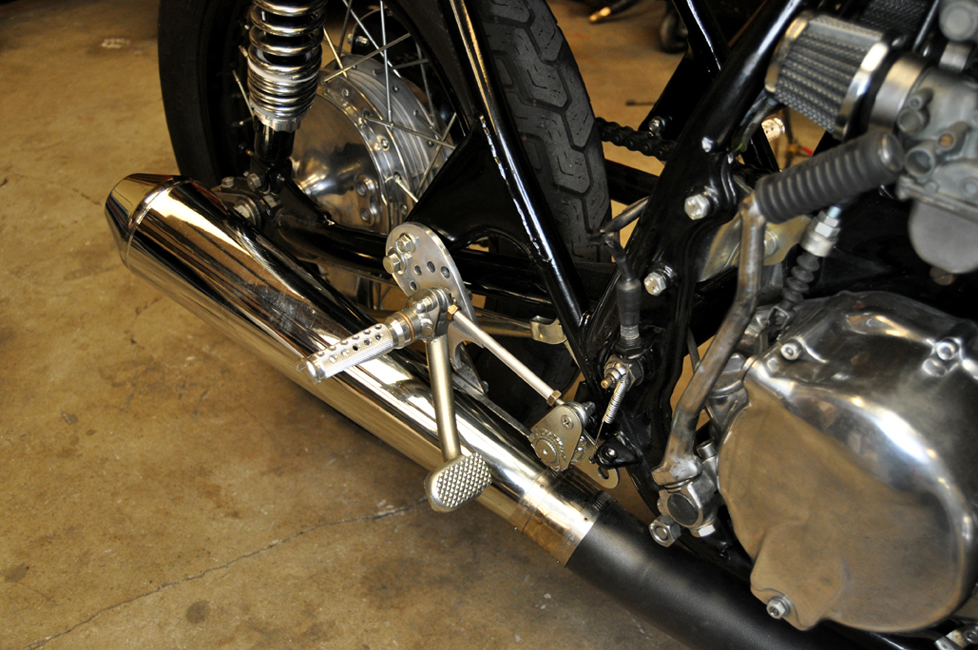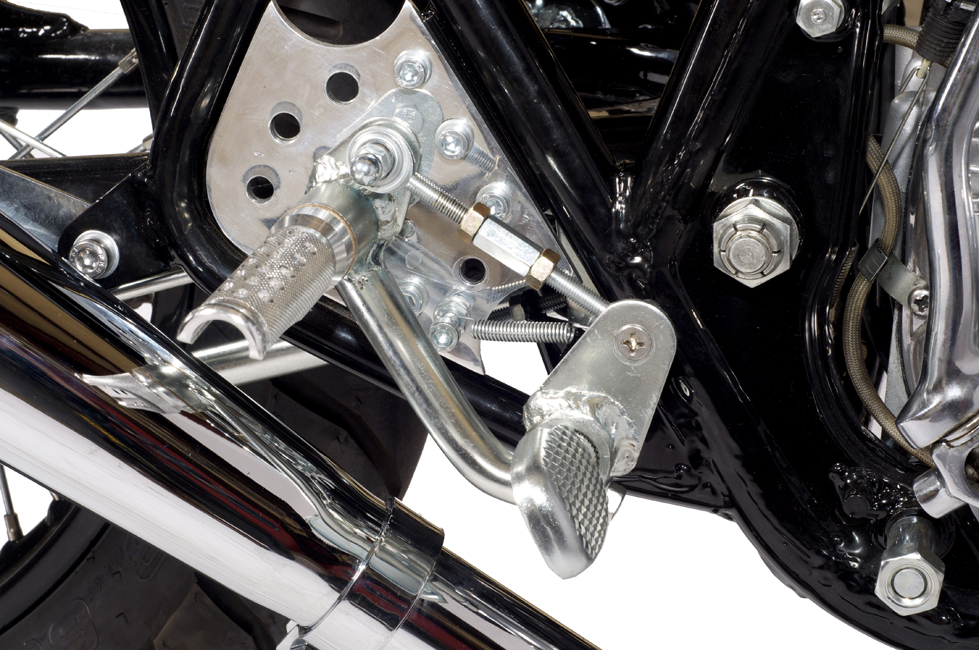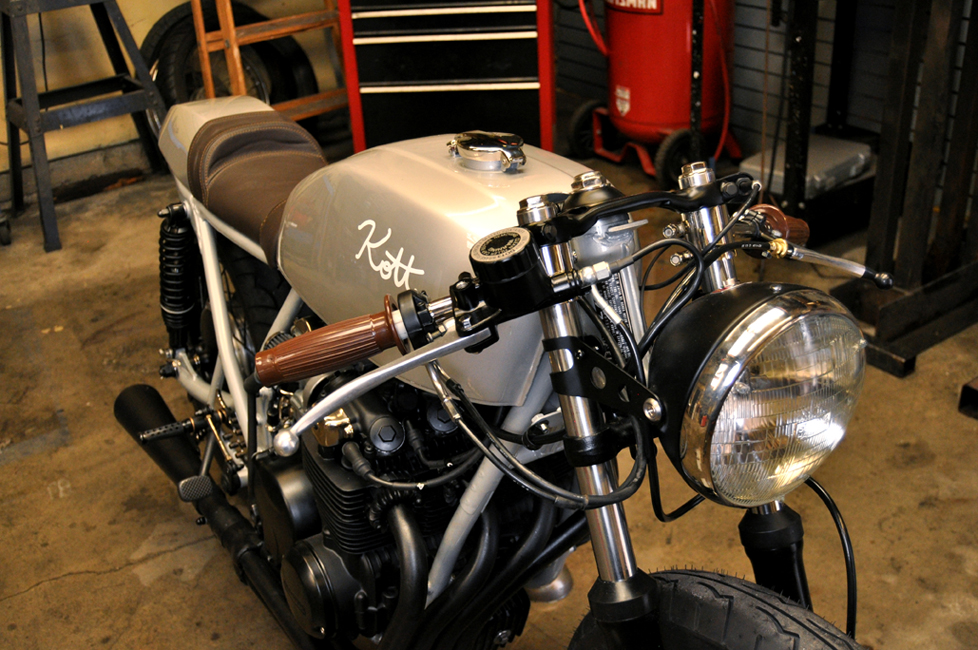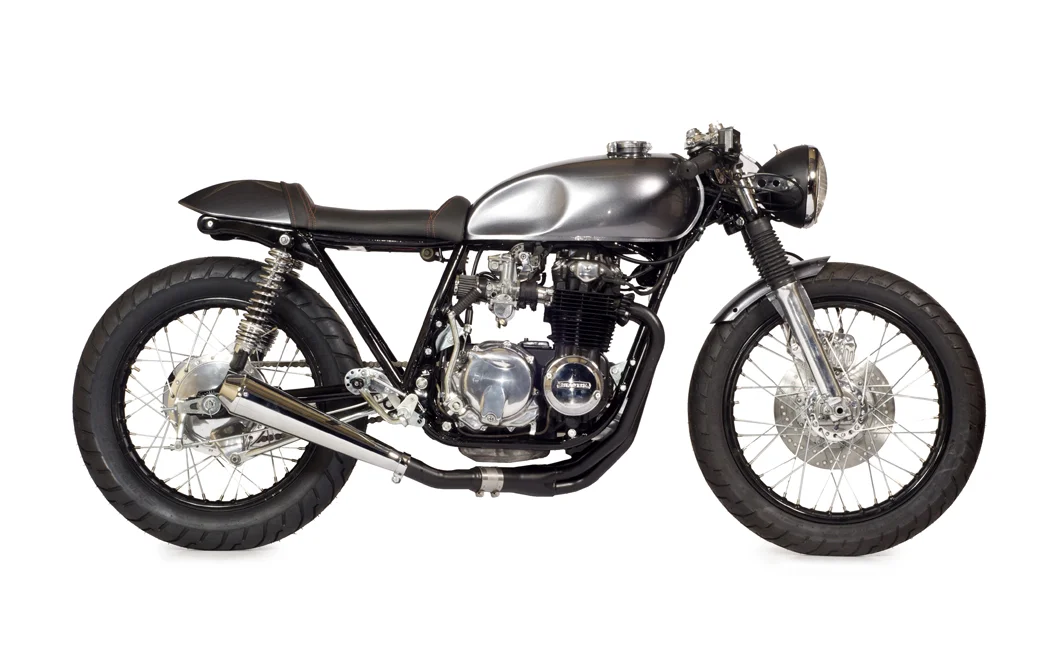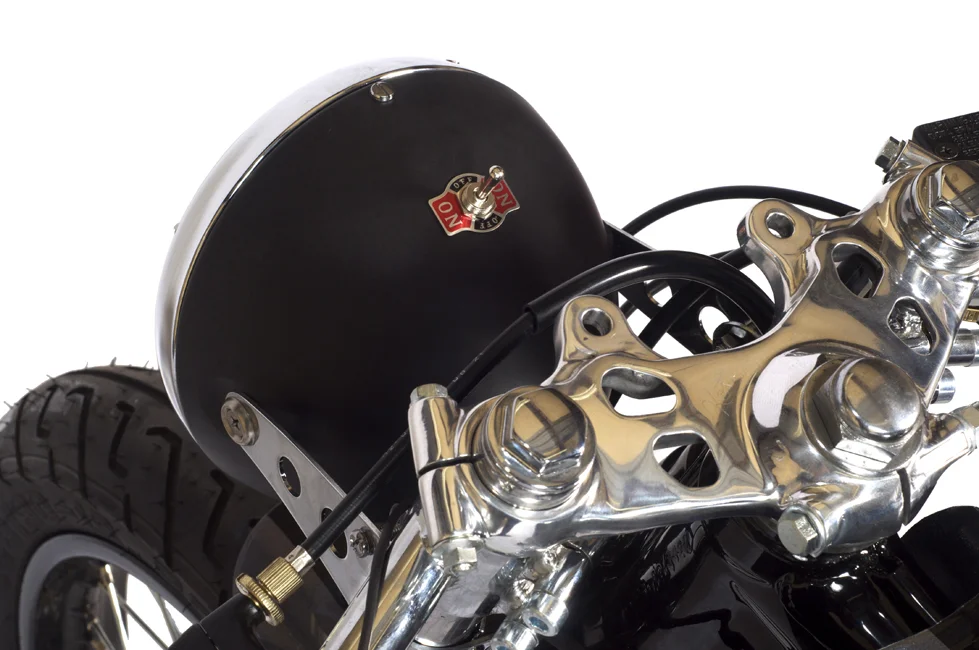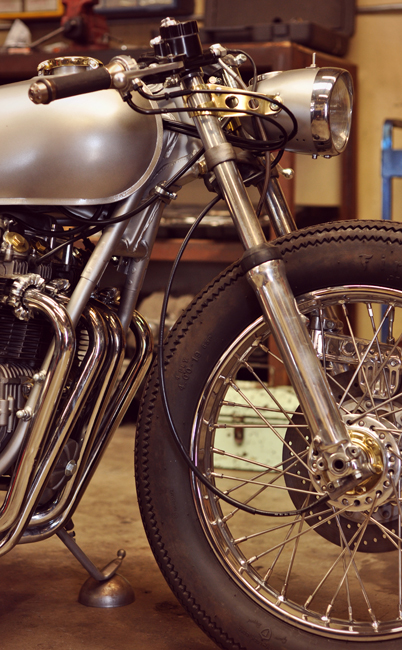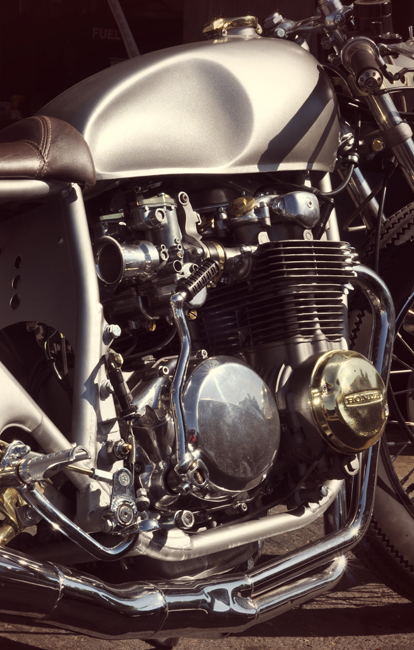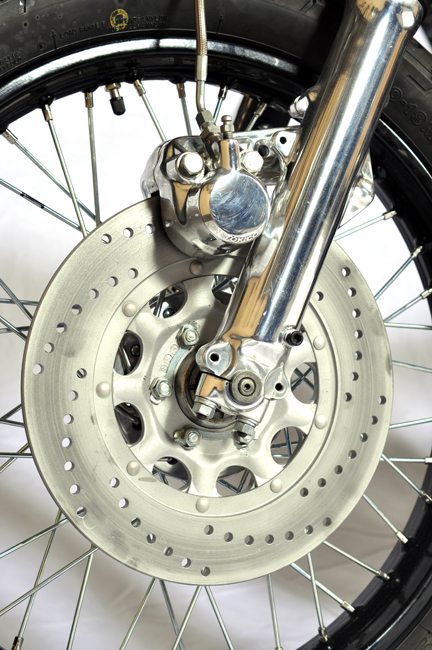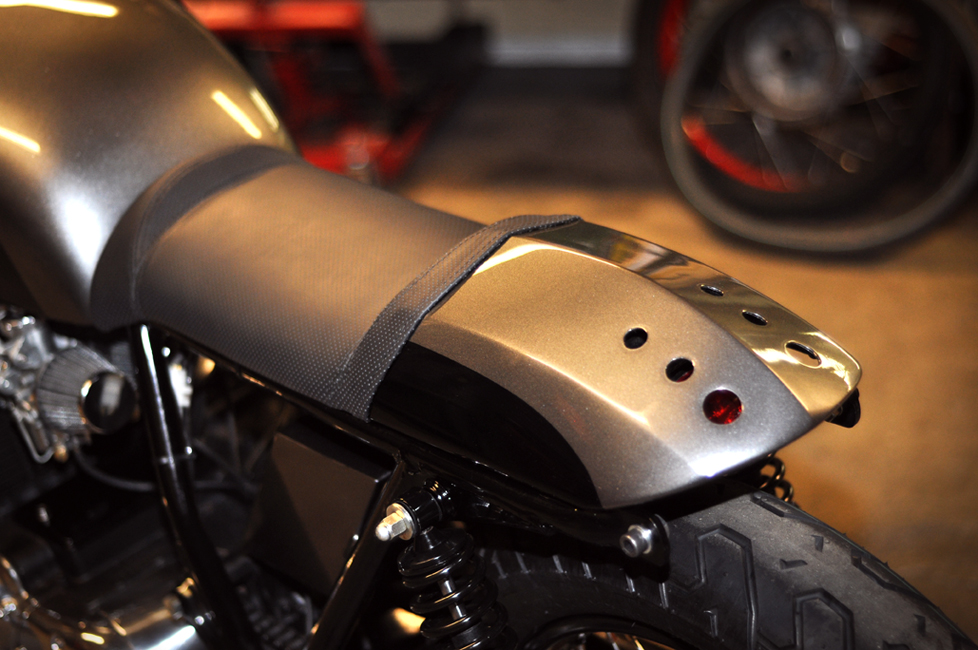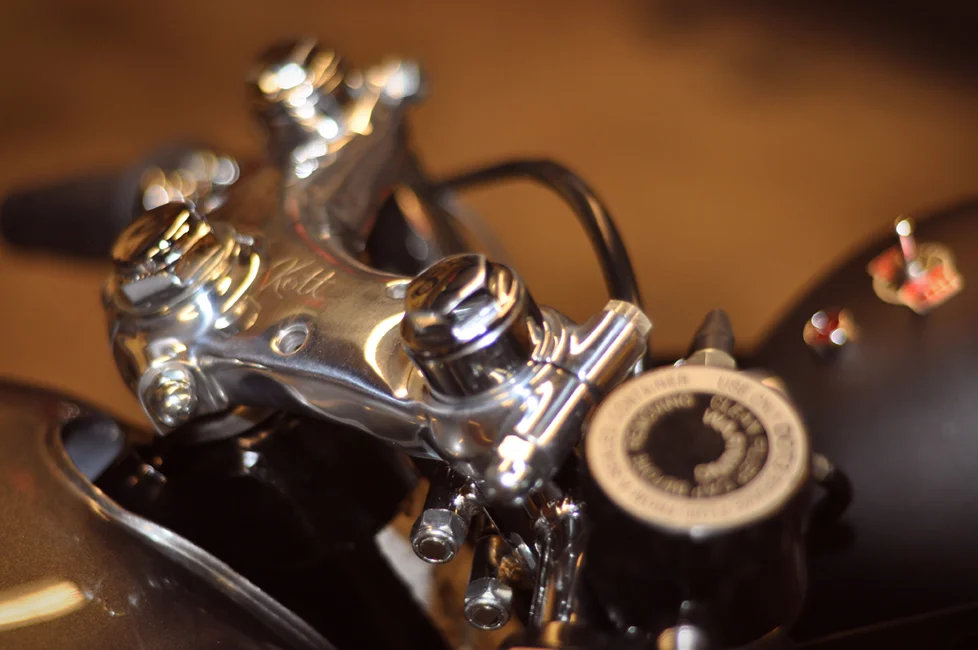Definition: ve·ri·tas English ver-i-tas, -tahs] noun Latin. Truth.
“Even in literature and art, no man who bothers about originality will ever be original: whereas if you simply try to tell the truth (without caring two-pence how often it has been told before) you will, nine times out of ten, become original without ever having noticed It”.
C. S. Lewis
This quote caught our eye because C.S. Lewis heralds from The United Kingdom—the birthplace of the café racer culture. Even though he is not referring to the eclectic café racer scene he most certainly has a point. There appears to be no doubt that the stance and approach of the café style and functionality is permeating the mainstream motorcycle movement in terms of design and philosophy. It is extremely important to match the integrity of a custom build not only with what is visible but the quality of the components that are not seen. On this particular build the motor has been completely rebuilt. The ignition system was considered and optimized with the use of brand new Dyna coils and magnetic pick-up base plate. The internals of the carburetors have been carefully selected to work not only with the four into two header pipes but also with the custom velocity stacks. Neatly arranged under the seat cowl are brand new electronic components and a one-off heat shrunk wiring harness using all OEM connectors anchored to a riveted aluminum relocation table. As with all builds, the rear set plates were hand-crafted and thoughtfully positioned for ergonomic efficiency working in tandem with the hand-crafted steel seat pan and cowl for optimal rider position. Original Suzuki re-chromed wheels were re-laced with stainless custom cut spokes. The oil tank is of a parallelogram design that replicates the 55° and 125° triangulation of the Honda frame rails. Stainless steel feed and return hose was used in unison with leak-free A.N. fittings welded into the custom steel tank. In order to achieve a refined and elegant stance, this particular build incorporated the always useful 750 Supersport fuel tank complete with hand and knee indentations. The seat was made to just the right length for a continuous flow of color against the wheel base and overall length of the machine. Indentations were added to the seat to maintain a steady and comfortable aesthetic that paired well with the BMW charcoal gray paint selection. As a visual highlight, electroplated brass was incorporated sparingly to create a warm and antique finish and complements the RK gold O-ring high-performance drive chain and 17 tooth counter sprocket.
As with all builds done under the roof of Kott Motorcycles, a commitment to honest work that is well executed is a constant theme with every completed machine.
Often times the inspiration for a build can revolve around one single component. In the case of this 1976 CB 750, the rare and valuable four shoe front drum hub of the Suzuki Triple Two-Stroke Series became that very component.
